When it comes to cultivating a mint plant, it is essential to consider mint companion plants.
In this article, we will explore a range of plants that are considered bad mint companion plants.
Contents
Mint plant
The mint plant is a type of perennial herb that belongs to the Lamiaceae family. It has a strong aroma and is known for its fragrance.

Bad companion plants for mint
Choosing the right mint companion plants is essential for a successful harvest. Some plants can help, while others can harm. But sometimes mint can be beneficial for other plants, for example, for onions, mint can become a salvation from the carrot flies. So, what are bad companion plants for mint?
Other mint varieties. Growing different mint varieties near each other can lead to unpredictable flavors and reduced potency due to cross-pollination.
Dill. Dill can stunt the growth of mint and other plants due to its chemical emissions. To avoid negative effects, it is best not to companion planting dill with other plants.
Cilantro. Cilantro and mint have different growing requirements and growth habits, making them unfavorable companions.
Mint thrives in moist soil and requires regular watering, while cilantro prefers drier conditions.
Additionally, the spreading nature of mint can overpower the growth of cilantro, inhibiting its development. It is advisable to plant these herbs in separate areas of the garden.
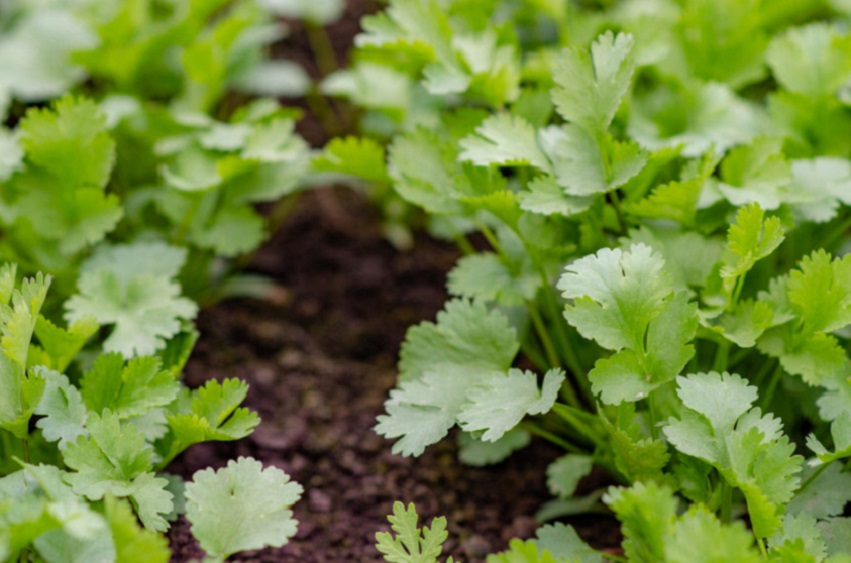
Fennel. You shouldn’t companion planting mint with Fennel. It can have bad effects on mint, although it’s considered a very good companion plant for some vegetables.
Allelopathic compounds released by fennel can interfere with the growing mint process, leading to reduced yields.
Furthermore, fennel attracts pests like spider mites, which can also infest mint plants.
Sage. Sage is not an ideal companion plant for mint. It produces natural herbicides that can inhibit the growth of other plants.
Growing mint separately from the sage in the garden will promote the well-being of both herbs.
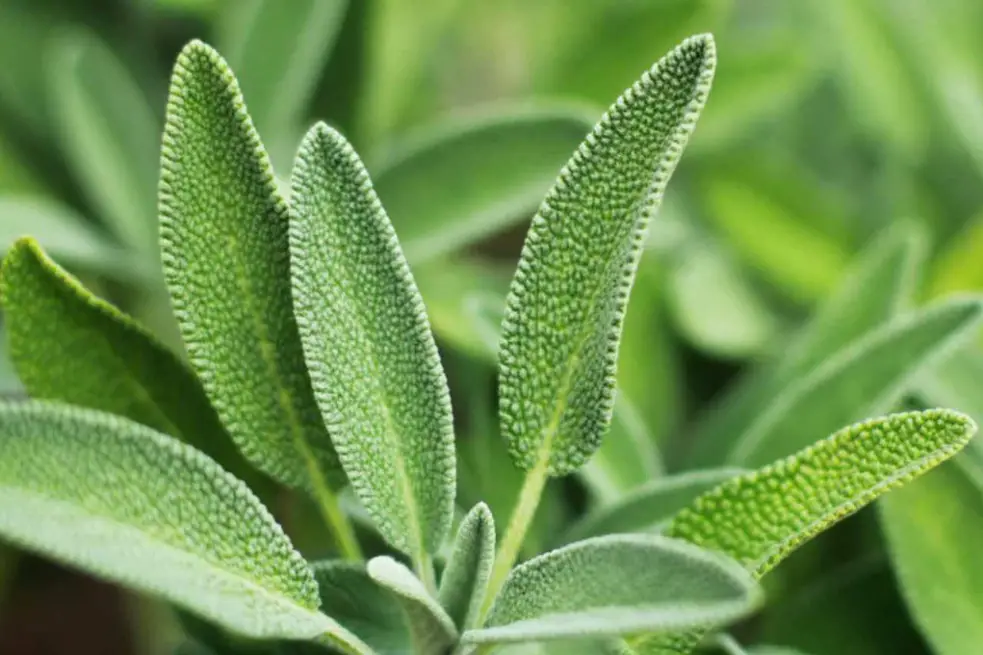
Lavender. You shouldn’t companion plant mint with Lavender because the volatile compounds emitted by the plant can inhibit the growth of mint plants.
To prevent any negative impact, it is best to avoid companion planting mint with these flowering plants.
Marjoram. Marjoram, belonging to the same family as mint, doesn’t make an ideal mint companion plant. Marjoram can compete with Mint for resources, limiting its growth and productivity.
To prevent any negative effects, it is best not to companion planting them.
Rosemary. Rosemary, known for its aromatic leaves and versatility in cooking, is not one of the good mint companions.
Rosemary produces certain chemicals that can inhibit the growth of companion planting mint.
Wormwood. Wormwoods, known for their bitter taste, are not ideal as mint companion plants. They produce allelopathic compounds that can inhibit the growth of other plants, including mint.
To prevent any negative effects, it is recommended not to companion planting mint with wormwood.
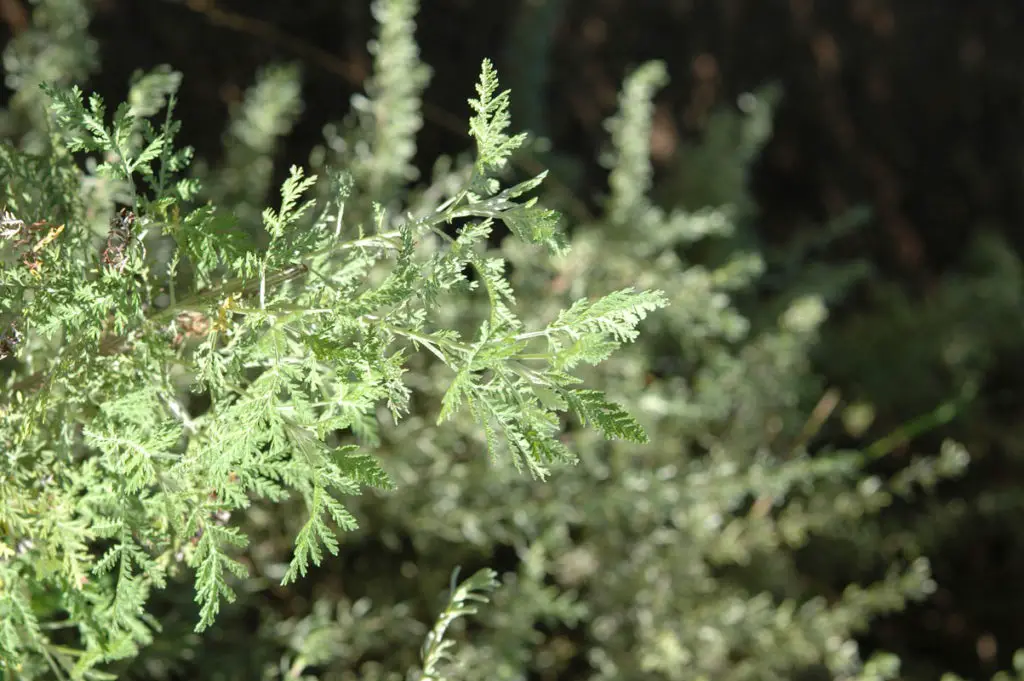
Image source: pinterest.com
Beans. While beans can be mint companion plants, it is better to keep them at a distance from each other.
Beans are susceptible to a fungal disease called bean rust, and some gardeners believe that mint can attract pests that may spread this disease to the bean plants.
Oregano. Oregano and mint are both members of the Lamiaceae family, but they aren’t the best companion plants.
Oregano is known to spread aggressively and can compete with mint for resources, leading to stunted growth and reduced vitality. It is advisable not to grow mint near that plant.
Peas. Peas are not recommended to be mint companion plants due to potential negative effects on pea growth. Mint has a vigorous growth habit and can compete with peas for nutrients and space.
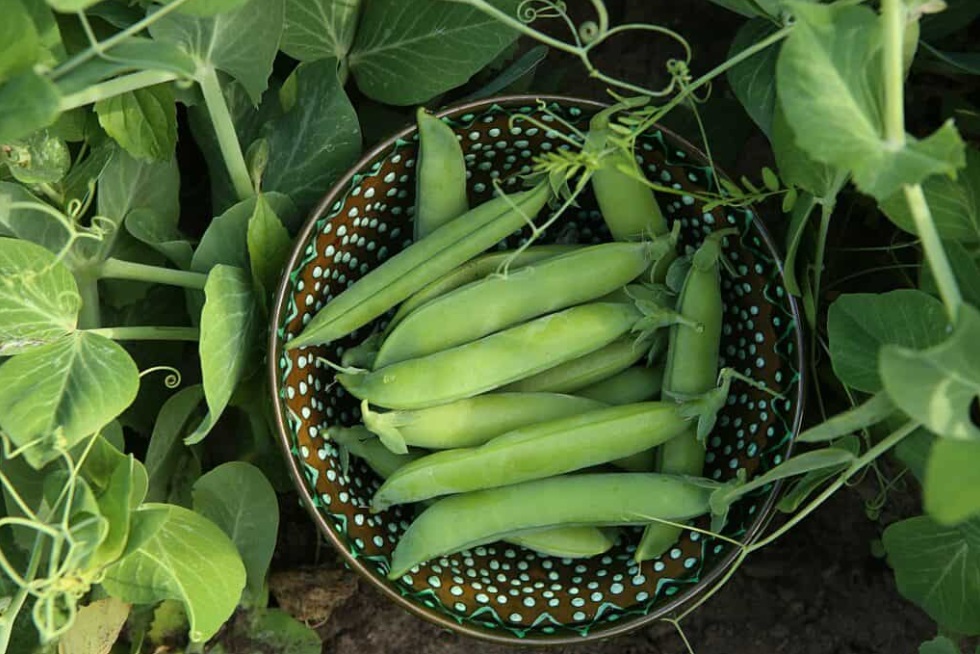
Image source: harvesttotable.com
Potatoes. Potatoes are generally bad mint companion plants. Mint’s spreading nature can make it difficult to control, and it may invade the space intended for potato plants.
Additionally, mint’s aggressive growth can hinder the development of potato tubers.
Chamomile. It’s not recommended for mint companion planting with Chamomile, a delicate herb with numerous beneficial properties because it can hinder the growth of mint when companion planting.
Chamomile’s root exudates contain compounds that can inhibit the growth of companion plants, including mint.
Carrots. Carrots are not considered to be ideal mint companion plants in the garden. Mint’s rapid growth can overshadow carrot plants and limit their access to sunlight.
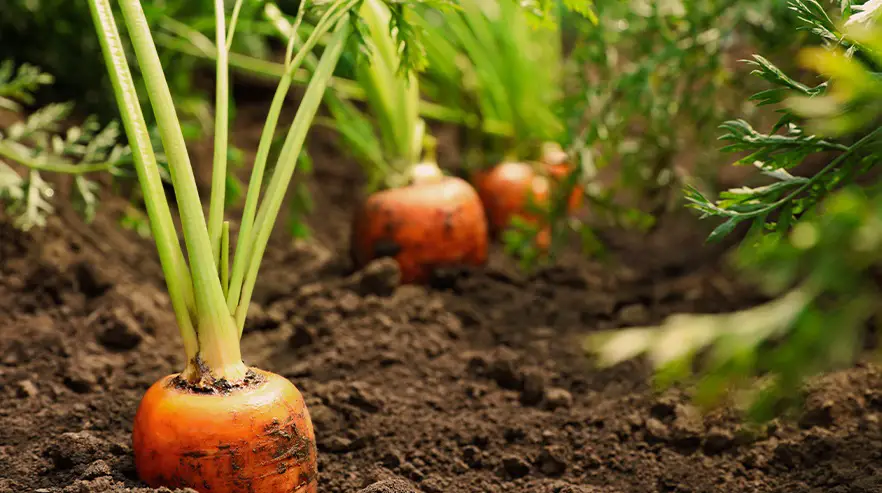
Image source: pinterest.com
Lettuce. Lettuce and mint are not considered ideal companions due to their differing growth habits.
Mint’s aggressive growth can overshadow lettuce plants, limiting their access to sunlight and hindering their development.
Additionally, some gardeners believe that the strong scent of mint can affect the flavor of lettuce. It is best to keep these plants separate in the vegetable garden.
Tomatoes. When it comes to companion planting, it is not advisable to pair tomatoes with mint.
Mint has a spreading habit, and it can invade the space of tomato plants, potentially overshadowing them.
Additionally, some gardeners believe that the strong scent of mint can adversely affect the flavor of tomatoes.
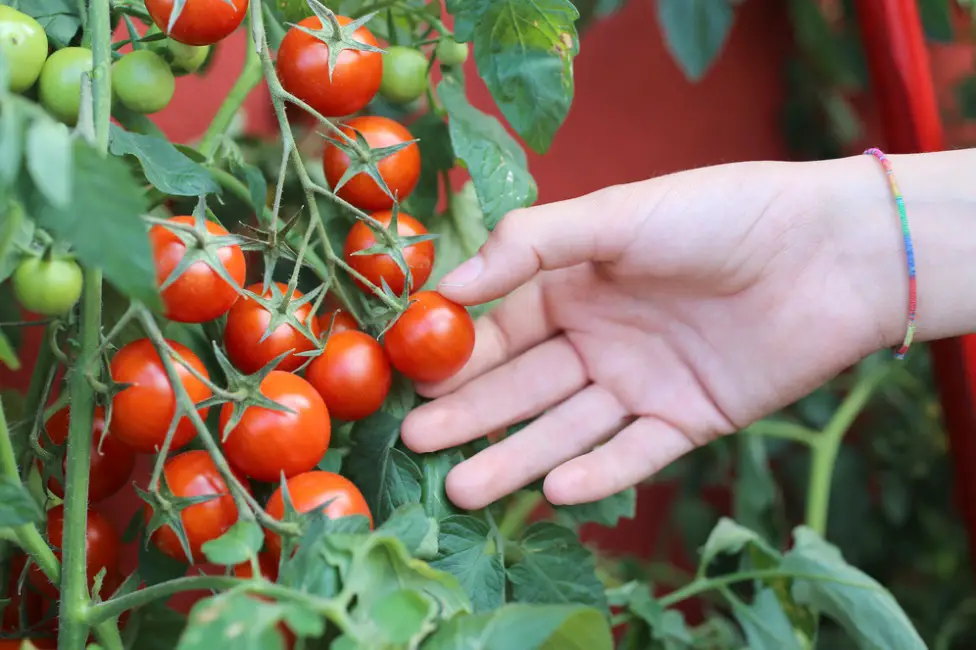
Image source: pinterest.com
Spinach. Spinach and mint are not considered ideal companions. Mint companion planting can overshadow spinach plants, limiting their access to sunlight and affecting their growth.
Additionally, the strong scent of mint can potentially affect the flavor of spinach.
Sunflowers. While sunflowers and mint can coexist, it is important to manage mint’s spreading habit to avoid its encroachment on sunflower plants.
Mint’s aggressive growth can overshadow sunflowers, limiting their access to sunlight and potentially affecting their development, because of that, sunflowers aren’t good mint companion flowers.
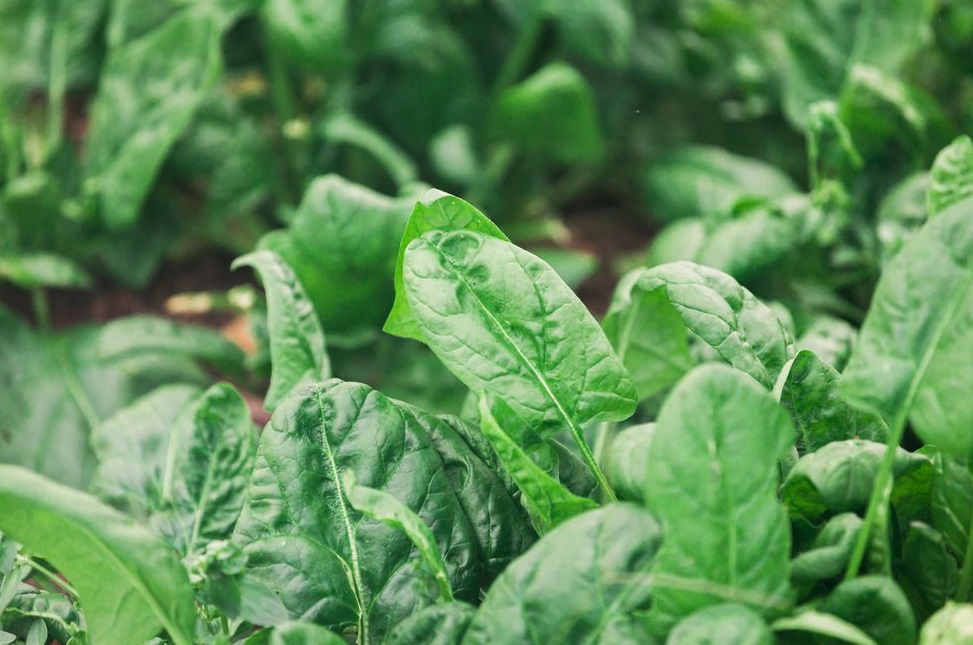
Image source: pinterest.com
Brassicas. Growing mint is not recommended to be planted near brassicas, including cabbage, broccoli, and cauliflower. Mint’s spreading nature can interfere with the growth of these plants by competing for space and resources.
Additionally, some gardeners believe that the strong scent of mint can attract pests, spider mites, cabbage moths, and flea beetles that may be harmful to brassicas.
Asparagus. Asparagus and mint are not considered ideal companion plants due to their differing growth habits. Mint’s vigorous growth can overshadow asparagus plants, limiting their access to sunlight and potentially affecting their yield.
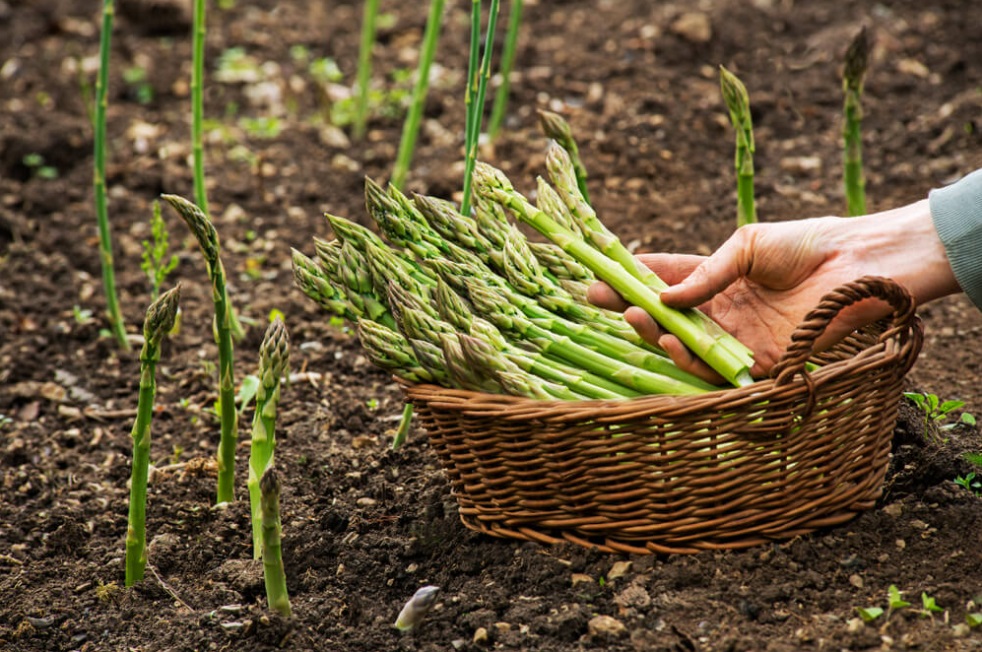
Image source: pinterest.com
Regular maintenance and containment measures can help prevent any negative effects.
Good mint companion plants
Companion planting is a gardening practice that involves growing certain plants together to maximize their mutual benefits.
When it comes to mint, selecting the right companion plants can enhance its growth, flavor, and overall health. Without mint companion plants, mint can overrun your garden.
Chives. Chives make fantastic companion plants for mint. Their pungent aroma helps deter pests that may otherwise bother Mint.
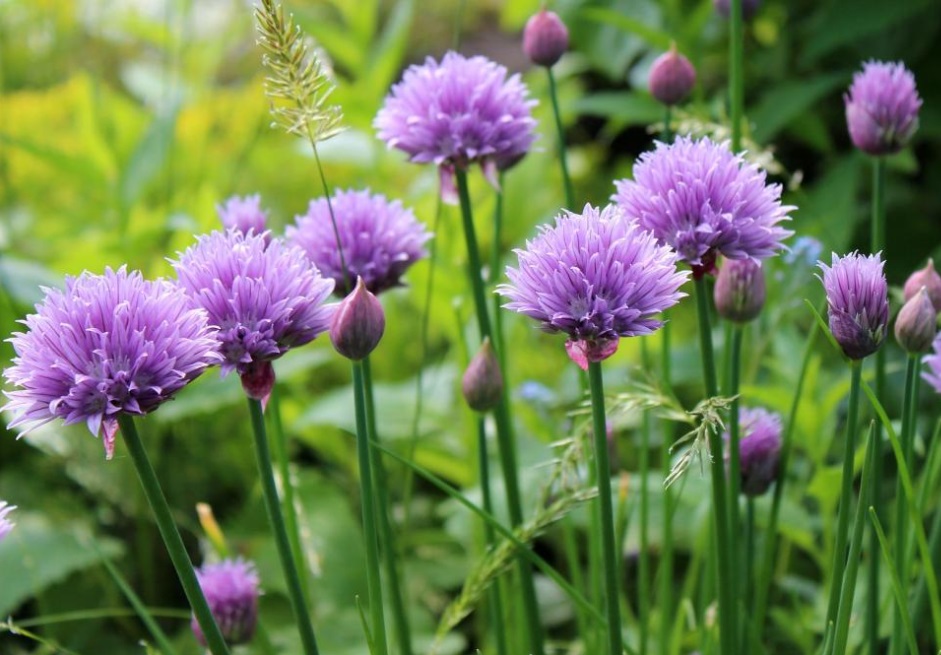
Image source: pinterest.com
Borage. Borage is a popular companion plant for many herbs. It attracts bees and other pollinators, improving the overall pollination of both plants.
Borage also enriches the soil with nutrients, benefiting the growth and flavor of mint.
Additionally, chives’ upright growth habit complements the spreading nature of mint, creating a visually appealing combination in the garden.
Calendula. They attract bees and ladybugs, which help pollinate mint flowers and control pest populations.
Additionally, calendula’s aromatic compounds may help repel certain pests, promoting a healthier environment for companion plant mint.
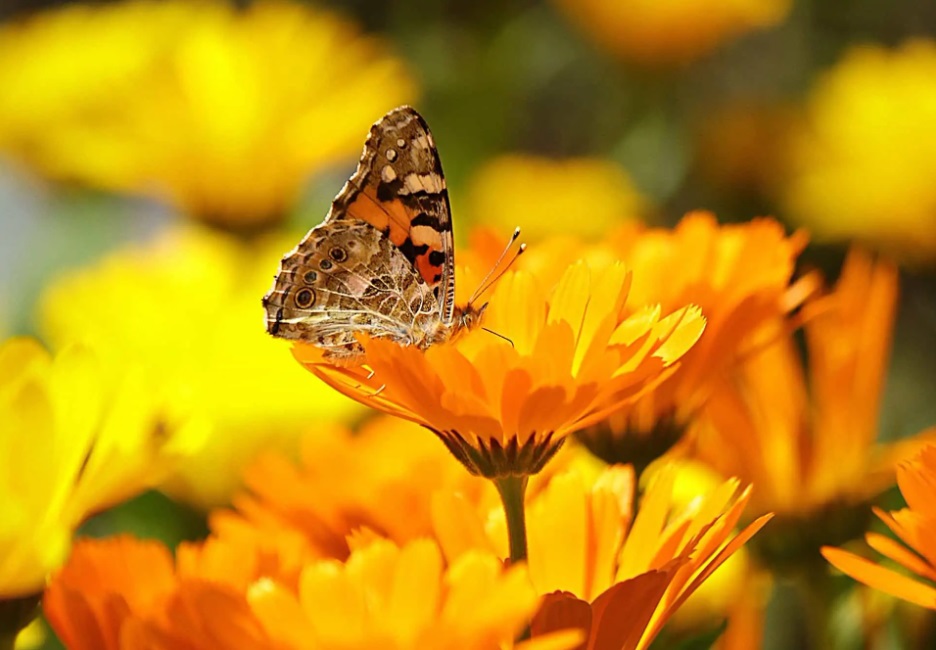
Image source: pinterest.com
Daisies. Daisies make a delightful companion planting. Their bright and cheerful blooms attract pollinators.
Daisies also serve as a natural ground cover, suppressing weed growth and providing a protective layer around mint plants.
Yarrow. Yarrows are good companion plants for mint due to their ability to attract predatory insects that feed on pests.
By attracting these helpful insects, yarrow helps control pest populations, promoting healthier mint plants.
Yarrow also has deep roots that help improve soil structure and drainage.
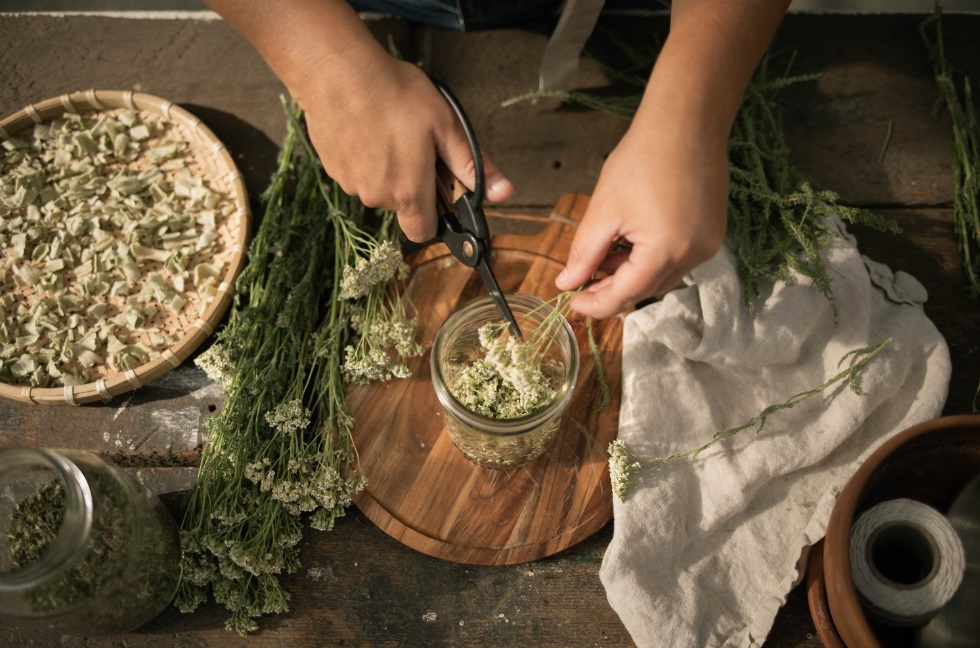
Image source: pinterest.com
Marigolds. Marigolds are renowned for their pest-repellent properties, making them good companion plants for mint.
Their strong scent deters pests such as aphids and nematodes, which can harm mint plants.
Oregano. Oregano and mint, both members of the Lamiaceae family, make excellent companion planting. They have similar cultural requirements, including full sun and well-drained soil.
Growing mint alongside other herbs looks good and helps them both grow well together.
Thyme. Thymes are good companion plants for mint. Like oregano, thyme shares similar cultural needs with mint and complements its growth habit.
Both herbs thrive in full sun and well-drained soil.
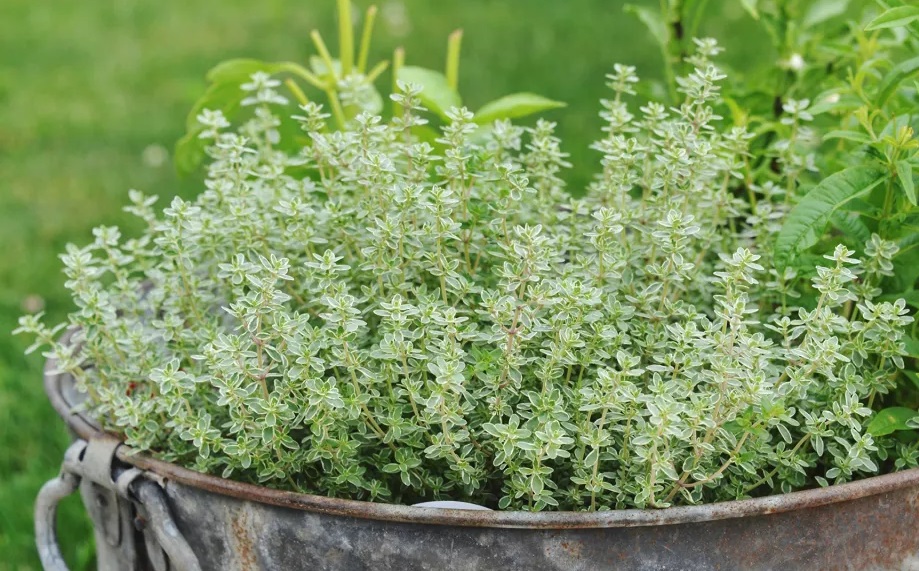
Image source: pinterest.com
Nasturtiums. They act as a natural deterrent to pests, such as aphids and whiteflies, which can be problematic for mint plants. The vibrant flowers of nasturtiums also add color and charm to the garden.
Planting mint
Mint is a versatile herb known for its refreshing aroma and culinary uses. Whether you’re a seasoned gardener or a novice, it’s a rewarding experience to grow mint.
Selecting a location
Choose a location that receives ample sunlight, ideally 4-6 hours a day. Mint thrives in well-drained soil, so ensure the area has good drainage.
To keep your Mint healthy, make sure the soil stays moist and it gets partial shade.
Mint can spread quickly, so use containers or barriers to prevent invasive growth.
Soil preparation
Remove weeds and grass from the planting area. Loosen the soil to 8-10 inches and add organic matter like compost or manure.
This improves soil fertility and drainage, creating ideal mint-growing conditions.

Image source: pinterest.com
Propagation
Mint is usually grown from cuttings or transplants rather than seeds.
Select healthy stems with leaves and remove lower leaves to propagate from cuttings. Place cuttings in water until roots develop, then plant in moist soil.
Planting
Dig a deep hole in moist soil for the mint plant’s roots. Take out the plant carefully or loosen the roots for a transplant. Place the plant, and level it with or above the soil surface.
Add soil and gently firm around the plant.
Spacing
Space mint plants approximately 12-18 inches apart to allow for their spreading habit. This prevents overcrowding and provides sufficient room for each plant to grow and develop.
Watering
Water mint after planting to settle the soil around the roots. Mint needs frequent watering, especially in drought, to maintain moist soil.
Avoid overwatering to prevent root rot. Check moisture levels and water when the topsoil is dry.
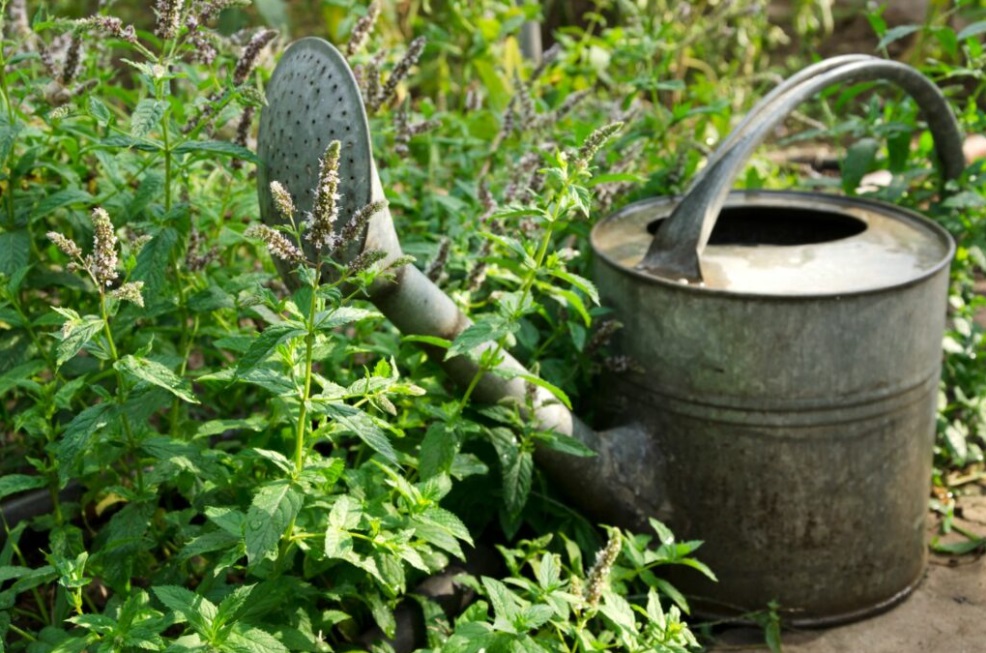
Image source: plantura.garden
Mulching
Use organic mulch to conserve moisture, suppress weeds, and stabilize soil temperature around mint plants. Use straw, wood chips, or compost in a 2-3 inch layer, but don’t cover the mint’s crown.
Fertilization
Mint needs minimal fertilization. If your soil lacks nutrients, use organic fertilizer once or twice during the growing season.
Follow package instructions for dosage and apply around the base of plants, avoiding stem contact.
Maintenance
Maintaining mint is crucial. Prune plants to promote bushier growth and prevent legginess. Remove weeds competing with mint.
Check for pests or diseases and treat them if needed.
Harvesting
Harvest mint leaves in the morning when essential oils are concentrated. Cut stems above leaves for new growth.
Harvest often to keep bushy and not woody.
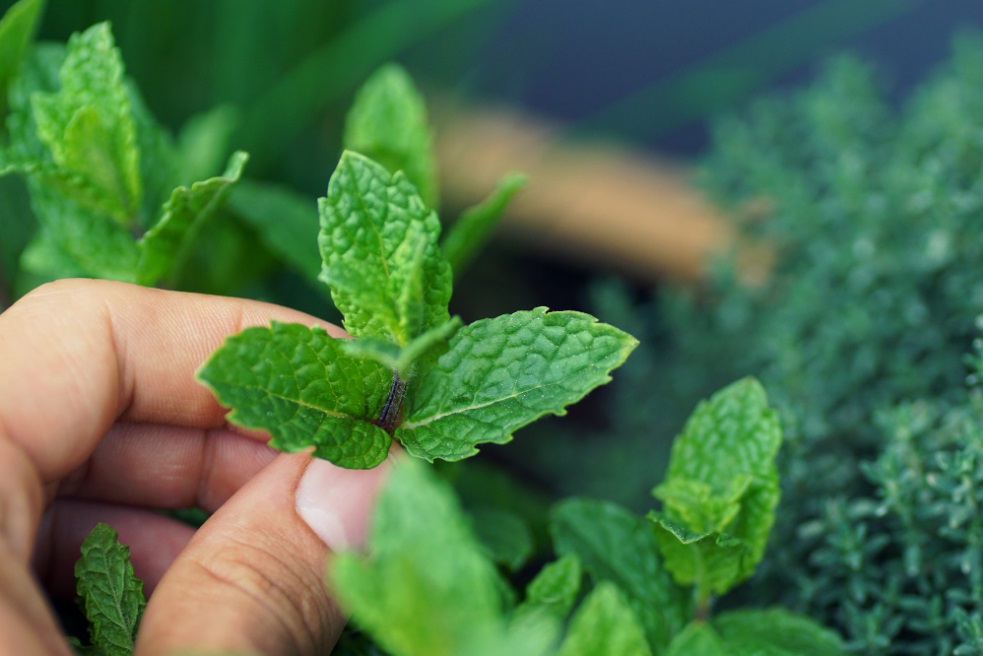
Mint and pests
Understanding how to deal with pests will help you maintain a healthy and thriving mint garden.
Common pests that affect mint
- Spider mites are tiny pests that can cause significant damage to mint. They feed on the plant’s sap, leading to stunted growth, discoloration, and the presence of fine webbing.
- Mint can be susceptible to infestations by flea beetles, known for their ability to cause damage to plant foliage. These beetles can chew tiny holes in the leaves, leading to a weakened and unattractive appearance.
Benefits of mint companion planting
Mint also has the potential to attract beneficial insects to your garden.
These beneficial insects help control populations of harmful pests, pollinate plants, and contribute to overall plant health.
Mint’s effect on carrot root flies
Mint plants can have a repellent effect on carrot root flies, which are pests that target the roots of carrot plants.
The strong aroma of mint can help mask the scent of carrots, making it difficult for the flies to locate and infest the plants.
Mint deters pests
Mint plants possess natural properties that can act as a deterrent to various pests in your garden.
The strong aroma and chemical compounds found in mint can help deter pests and reduce the risk of damage to your plants.
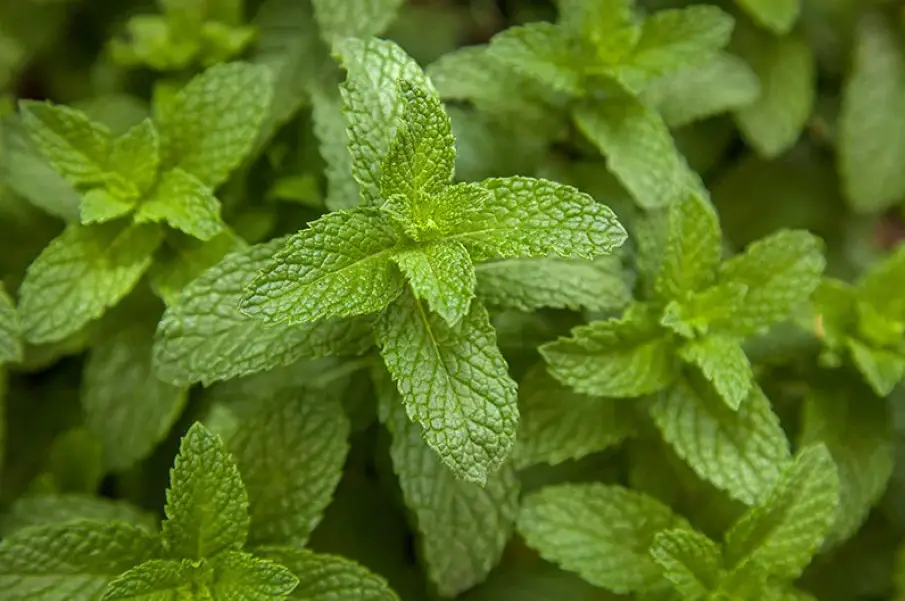
Image source: pinterest.com
Mint’s effect on cabbage moths
The strong scent of mint can help mask the attractive scent of these plants, making it less likely for cabbage moths to locate and lay eggs on them.
In addition, mint has been known to repel pests such as flea beetles, which commonly attack plants like bush beans and bell peppers.
FAQ
If you have any remaining questions, below are their answers.
What should not be planted with mint?
Mint should not be planted with other mint varieties, dill, cilantro, fennel, sage, lavender, tarragon, oregano, chamomile, marjoram, rosemary, rue, and wormwood.
Does mint harm other plants?
Mint can harm other plants if not properly managed. It is known for its aggressive growth and can easily take over garden beds. Also, mint sometimes attracts pests like flea beetles.
Additionally, certain varieties of mint, such as peppermint and spearmint, release allelopathic compounds that can inhibit the growth of nearby plants.
Can you plant mint near parsley?
It is generally recommended not to plant mint near parsley. Mint tends to spread rapidly and can overpower the growth of parsley.
Conclusion
Selecting suitable companion plants is crucial for the successful cultivation of mint. Some plants can harm mint’s growth and health.
Would you like to learn more about bad companion plants for mint? Please open the link and read one more article.



